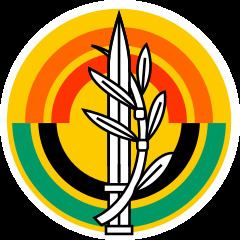Country Israel Major general Kobi Barak | Nickname(s) Mazi Founded 1998 | |
 | ||
Size 133,000 active380,000 reserve Engagements 2006 Lebanon War (2006) Similar Israel Defense Forces, General Staff of the Israel Def, Northern Command, Southern Command, Central Command Profiles | ||
Israeli army military power armed forces best weapons specifications vsb defense
The Israeli GOC Army headquarters (Hebrew: זרוע היבשה, Zro'a ha-Yabasha, "Ground Arm"), known unofficially as Mazi, is a multi-corps command headquarters created in 1998, which amalgamates the ground forces of the Israel Defense Forces. The current size of the Israeli Ground Forces is estimated at roughly 133,000 active soldiers and 380,000 soldiers in reserve.
Contents
- Israeli army military power armed forces best weapons specifications vsb defense
- Name
- Units and structure
- The IDFs third arm
- Heads of Mafchash and MAZI
- Future
- References
Name
The GOC Army Headquarters is known unofficially as Mazi, the Hebrew pronunciation for an acronym for "Ground Arm Command" (מז"י, (מפקדת זרוע היבשה, Mifkedet Zro'a ha-Yabasha), which was the GOC Army Headquarters' previous name before being renamed to the current "Ground Arm" (זרוע היבשה). After this renaming, the acronym MAZI officially refers nowadays to "Commander of the Ground Arm" (מפקד זרוע היבשה, Mefaked Zro'a Ha-Yabasha). However the old acronym MAZI still remains the popular name for the GOC Army Headquarters.
Units and structure
MAZI includes the five ground-warfare corps of specific military functions:
In addition, MAZI includes four "staff divisions":
The IDF's third arm
Under the IDF 2000 reforms, MAZI was set to become the IDF's third Arm, alongside the Air and Space Arm and the Sea Arm. Until the creation of MAZI, IDF ground forces were directly subordinated to the Chief of Staff through the Regional Commands (North, South, and Central). The intention of the reform was to subordinate the ground forces to one ground commander, who is a part of the Joint Staff, by the example of the Israeli Air Force and Navy; and unlike most of the other armed forces, where operational Army, Air Force, and Navy plus other auxiliary support units, are all subordinated to unified commands.
The proposed reform for the Ground Arm was rejected and the ground forces remain subordinated to the three regional commands. Likewise with combat support and rear-line corps, which are partly subordinated to the respective Directorates. In times of war, the Ground Arm Commander acts as an advisor to the IDF Chief of Staff on ground warfare.
As an IDF arm, the Ground Arm is meant to build of the ground forces' strength and working toward balance, combination, and coordination between the ground corps. It does so by instruction and training of individual units, planning and publishing the relevant doctrine, organizing the forces respectively for their missions, and R&D and acquisition of materiel. Its authority ranges up to the corps level. Above it, meaning the regional commands themselves, the authority is of the IDF Joint Staff.
Heads of Mafchash and MAZI
Future
The IDF is currently planning major structural reform. Due to the poor training and equipment among army reservists, large numbers will be dismissed.
